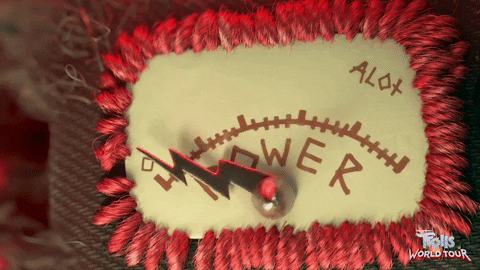What exercises do NFL players do?
When we are training strength movements to develop NFL athletes we need to focus on speed, strength, and explosive power. In order to develop explosive strength movements that lead to speed we have to think about speed from a top-down perspective. We have to look at it from the idea of “What is speed?

If we break down the 100 meters, we see a start, a drive phase or max acceleration, a transition, and then a transition into max speed. So then we got to take another step back off of that and we have to ask, “When are most of our Garage Strength athletes going to be training in what range?” Are they training in max speed or in the start and acceleration? Ideally, in most cases, football players will always be training in a starting position and through the max acceleration phase. Almost 80-90% of the time when training speed for field-based sports, we need to be focusing on these ranges. Think about it–athletes are running and stopping, running and stopping. Rarely, do athletes get to their top-end speed.
The start and the acceleration become the key components that need to be trained in the weight room to drastically improve speed overall. We do the following exercises with NFL and collegiate football players to develop speed and explosive power on the field.
5. Weighted Quarter Squat Jumps W/ XPT Half Rack
This exercise utilizes the XPT Half Rack. A very sweet training tool that allows athletes to perform squat jumps and then release. We have to understand that if we do a full acceleration movement and then release, like a squat jump, we are able to recruit more high threshold motor units. This will help with the starting position and things like the vertical jump.
We want to think about grounding and reacting as quickly as possible. We have athletes do two to three jumps, and then on the last jump release and let everything go. The whole goal is to let go of the bar and focus on a quick reaction.

The XPT Half Rack is a really, really fun tool. It can really help improve explosiveness for speed. Now if an XPT Half Rack is not available, we can use a PowerLastic band. The problem with the band is the load can not create the same load. The XPT Half Rack can be loaded up with the appropriate weight-based on capability. Still, the band is a reasonable substitute to do quarter squat jumps with.
Two to three sets of four to five reps are plenty to help develop the starting position, acceleration capability, and the necessary reactiveness to be fast to have that explosive strength to carry over to tremendous amounts of speed.
4. Power Snatch
We like this exercise because it improves a couple of different factors. It will improve our start position, our rate of coordination out of the start (how quickly we can coordinate and recruit various muscle groups to produce a ton of force), and improve our mobility. And that brings us right into the power snatch.

The power snatch is a movement that can be performed from the floor, from a box, or from a hang. We want to focus on getting into a start position and creating a high rate of coordination. The goal is to control the barbell past the knees (the knees clear back), make contact off the hips, a big long finish that is explosive through full extension, and then into a rapid catch.
Not only will the power snatch improve our start position and rate of coordination, but it will also teach us how to absorb force overhead to make our dynamic trunk control more stable, key concepts behind improving speed. Use this movement twice a week. One day push the weight and other days do a bunch of rep to imprint techniques to develop more explosive strength for speed.
3. Triple Jump Step Up
This is a movement we got directly from Charles Poliquin. We want to utilize this movement to improve unilateral strength and stability. We also want to use this movement to improve the drive phase to be able to accelerate as fast as possible.
The traditional triple jump step up is ideally performed when having short enough of a box to go down and touch the floor. This is not necessary though. Start standing on the top of the box. Use the down foot as a guide. The movement will really open up the hips. Get nice and deep and drive up with the lead leg.

We like to utilize this movement with weight or dumbbells to overload the movement. Add the load slowly. Regardless of load or not, the whole goal is to focus on a big drive from the glutes and quads for great transfer to max acceleration.
Perform two to three sets of four to five reps on each leg.
2. Banded Glute Ham
A lot of people may not have a glute ham. On top of that, some may not have hooks on the glute ham to hook the band. Don’t worry about it, utilize a dumbbell to anchor the band. Just make sure the dumbbells are heavy.
The whole goal when talking about speed stems from the accommodating resistance at the top. We want to focus on lighting up the glutes and hamstrings, even the lower back to a point. Do three sets of four or five reps.

An alternative movement involves using just a PowerLastic band. Wrap the band handles right around the feet, deck the band over the back of the neck, and load the hamstrings up to perform the banded good morning. Make sure to really exaggerate the hip extension through the hammies. The rapid acceleration into the lockout is important. The PowerLastic band creates greater tension at the top to help with the mind-muscle connection which leads to greater coordination which in turn leads to better speed.

Do these movements once or twice a week to help develop explosive strength that is needed to develop speed.
1. Holm Hurdle Hops
A lot of people call this movement power gallops. But we like to reference Stephen Holm, a man with the largest difference between his own height and the high jump height cleared. This movement teaches athletes how to not be super rigid and robotic. Athletes learn how to be more floaty and have more finesse. That is a big factor when talking about speed. Being more fluid is more important than being overly rigid.

Always do the non-dominant leg first. We want to see a good take-off, a good reaction, and solid finesse. The movement doesn’t need to be crazy, crazy hard, but we still want to see a reasonably quick reaction.
Perform two to three sets of four to five jumps with each leg. Now if hurdles aren’t available, just pretend there are hurdles there and perform the movement. Either way, the movement will help with the start, max acceleration, and show asymmetries in the body. Utilize the movement to increase speed and improve overall coordination while being very elastic.
We want the body to use elasticity to create more energy stored inside of the body so it can be used to produce more force, a key to being faster.

Recap
Being fast and explosive on the field, court, or in any athletic situation is a must to showcase superior performance. Thankfully, there is a myriad of exercises that can be used to develop said explosive strength. Better yet, our freak athlete manufacturing facility at Garage Strength, through years of scientific research from our R & D department know which exercises really do the trick. And what’s really f’n awesome, is we are more than happy to share those exercises with all of our readers and viewers. Since, dear reader, you’ve made it this far, you know which five exercises we are talking about. The only thing left to do is go out there and train using our recommended exercises. Just make it a point to stop on back, comment, and let us know how it goes!
DANE MILLER
Dane Miller is the owner and founder of Garage Strength Sports Performance. He works with a select handful of clients on building comprehensive programs for fitness and nutrition. Several times a year he leads a workshop for coaches, trainers, and fitness enthusiasts.


